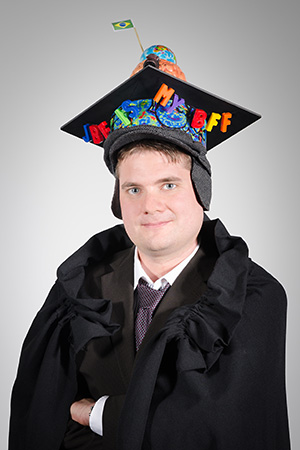Michael Manhart
Dynamic Interventional Perfusion Imaging: Reconstruction Algorithms and Clinical Evaluation
Abstract
Acute ischaemic stroke is a major cause for death and disabilities with increasing prevalence in aging societies. Novel interventional stroke treatment procedures have the potential to improve the clinical outcome of certain stroke-affected patients. Certainly, prompt diagnosis and treatment are required. Brain perfusion imaging with computed tomography (CT) or magnetic resonance imaging (MRI) is a routine method for stroke diagnosis. However, in the interventional room usually only CT imaging with flat detector C-arm systems is available, which do not support dynamic perfusion imaging yet. Enabling flat detector CT perfusion (FD-CTP) in clinical practice could support optimized stroke management. By stroke diagnosis in the interventional room precious time until the start of treatment could be saved.
Recently, first promising clinical results for FD-CTP imaging under laboratory conditions have been presented. Based on this work, this dissertation introduces and evaluates novel technical contributions for noise reduction, artifact reduction and dynamic reconstruction in FD-CTP. Furthermore, the feasibility of FD-CTP imaging in clinical practice is demonstrated for the first time using data acquired during interventional stroke treatments.
CT perfusion imaging requires measurement of dynamic contrast agent attenuation over time. The contrast agent signal in the brain tissue is very low and noise is a major problem. Thus a novel computationally fast noise reduction technique for perfusion data is introduced.
Currently available C-arm systems have a comparably low rotation speed, which makes it challenging to reconstruct the dynamic change of contrast agent concentration over time. Therefore, a dynamic iterative reconstruction algorithm is proposed to utilize the high temporal resolution in the projection data for improved reconstruction of the contrast agent dynamics.
Novel robotic C-arm systems (Artis zeego, Siemens Healthcare, Germany) provide a high speed rotation protocol (HSP) to improve the temporal acquisition of the contrast agent dynamics. However, the HSP suffers from angular under-sampling, which can lead to severe streak artifacts in the reconstructed perfusion maps. Thus a novel, computationally fast noise and streak artifact reduction approach for FD-CTP data is proposed. The feasibility of FD-CTP using the HSP is demonstrated with clinical data acquired during interventional treatment of two stroke cases.
Furthermore, the design of a digital brain perfusion phantom for the thorough numerical evaluation of the proposed techniques is discussed. The quality of the perfusion maps acquired and reconstructed using the introduced novel approaches suggests that FD-CTP could be clinically available in the near future.
